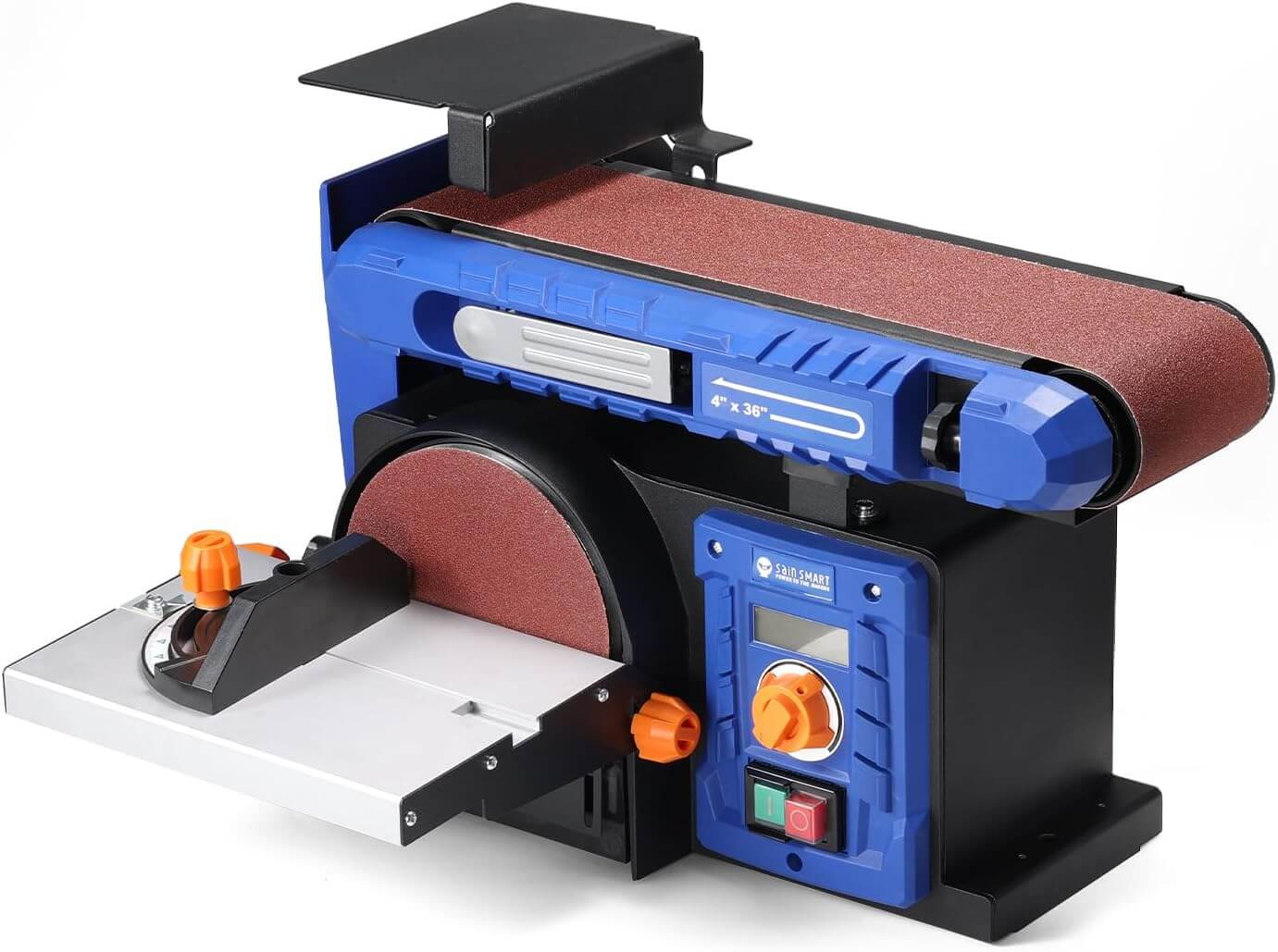Written by Roman J.
This is my story of making a Lazy Susan with Lake Como theme by Genmitsu 4040-PRO, from oak with a two-color inlay of Bodo and Wenge. I made it as a wedding gift for my close friends. Since the wedding took place by Lake Como, I'm hoping that this piece will bring back some memories—hopefully the romantic kind, not the "we spent way too much on this wedding" kind.
Wood preparation
It all started in mid-2023, when I bought the oak from my local lumberyard, along with a couple of beech boards for another project (an indoor playground). Thankfully, it all fit perfectly into my old car ;) I cut the board into smaller sections and ran them through the thickness planer. Bodo and Wenge were bought later online.

Originally, I had a completely different design in mind, one that could be made with just a table saw and maybe some hope and prayers. It was supposed to be similar to what I ended up doing for the base, just with inverted colors. However, that design lacked personalization, so I successfully convinced my wife that I needed to buy a CNC to carve text into the top. I got the 4040-PRO in December 2023 and it worked so great that I decided to take the design a few steps further and opted for a wooden inlay. After watching a couple of YouTube videos on the subject, I was "ready" to go!

I glued the oak, Bodo, and Wenge boards together months in advance, figuring that would give them plenty of time to settle their differences. Since the glued boards were much bigger than my planer could handle, I surfaced them on the CNC right before carving.
The design and preparation of the G-code
The base full colored image was created using AI and then converted to a three-color image using the PNG Color Decreaser at onlinepngtools.com. The number of details in the image was reduced using Photoshop's Cutout filter, with some additional manual work. Finally, I upscaled the image resolution using AI and converted it to a vector file (DXF) using Adobe Illustrator. The image was then imported into Autodesk Fusion, where all of the CAD and CAM work took place.

The carving on 4040-PRO
The journey from a PNG image to G-code was much longer than I anticipated, as this was my first inlay and the image was quite complex. As a result, I started carving the inlay just one week before the weeding, but hey, on YouTube it usually takes just about 10 minutes to carve everything! In reality the carving of all parts took more than 40h, in the “I really hope this will not break my v-bit” speed mode (150 mm/min).

The edges of the image were traced using a 4.75-degree tapered ball nose end mill (R0.5x30.5xD6x75) while the inside was carved using two flat end mills (4mm and 8mm). Each board was surfaced before carving with a 24.5mm face mill. The carving was divided into four main parts, each split into 3-6 tasks using various bits: (1) male carve of the brighter color in the Bodo wood; (2) female carve in the oak base for Bodo (after which both boards were glued and the result surfaced); (3) female carve in the oak base for Wenge (after which the edge was cut and the plate removed from the CNC); and finally (4) male carve in the dark Wenge, which was the most challenging.
“Final” touches
I managed to finish the carving just before the wedding by pulling two all-nighters. However, I didn't have enough time for cleaning, sanding, etc. I hoped to finish everything until the very last moment, but when I realized I wouldn't make it, I cut a simple top (without inlay) just one hour before the flight to Italy and gave this to the couple instead. For this, I used one of the backup boards, seen in the first pictures, from which I simply cut a circle on the CNC. I stashed it along with the finished base into the luggage and hopped on the plane. My wife was thrilled with how stressful the flight day turned out to be ;)
I did the final light sanding and finishing in the hotel. Without my palm sander, I couldn't remove the surfacing lines, but that was nothing compared to the fact that I made the circle too big, leaving some bark on one bottom side, but hey, at least we didn’t show up to the wedding empty-handed! I promised to replace the top once it will be ready.

I completed the project after the wedding. I sanded the top and chamfered the edges using a palm router. The wood was finished with food-grade mineral oil and wax.

Summary
Overall, I'm very happy with how it turned out. There were some minor imperfections I had to fix after carving, resulting from mistakes in the CAM design for the Wenge part (naturally, at the very end). If I were to do it again, I would use Wenge for the female part of the carve. This could be done by cutting a Wenge circle to insert into the oak base before I started carving the image. This could save a lot of time since the Wenge parts were the most complex and covered most of the surface. I would also run the wood grain horizontally. I chose vertical here only due to the size limitations of the Bodo and Wenge boards that I made.
The Genmitsu 4040-PRO performed great—I was able to run it for over 40 hours straight, with short breaks for bit changes and swapping the wooden pieces. My shop vacuum, on the other hand, almost died from overheating. Thankfully, after a couple of days of well-deserved rest, it made a miraculous comeback—ready for the next project on the list, which I hope to share with you in the future :)







